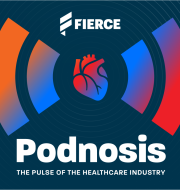| Today’s Big NewsJun 5, 2024 |
| By Gabrielle Masson Digital business cards. Gilead’s virtual reality ride. Soccer’s champions league final. A motorcycle brigade. This year’s American Society of Clinical Oncology conference in Chicago marked a return to its pre-pandemic heyday. |
|
|
|
By Angus Liu After Enhertu pioneered the HER2-low category in breast cancer treatment, AstraZeneca and Daiichi Sankyo are now hopeful that the antibody-drug conjugate can reach tumors with an even lower expression of the protein biomarker. |
By Angus Liu After Akeso and Summit's ivonescimab beat Keytruda in a head-to-head trial in non-small cell lung cancer, analysts are trying to sort out the financial ramifications while biopharma insiders are eager to see the exact data. But what does Merck think? |
By Fraiser Kansteiner In the phase 3 HARMONi-2 trial, solo ivonescimab delivered a statistically significant and clinically meaningful improvement in progression-free survival over Keytruda monotherapy. Summits shares spiked by about 270% on Thursday. |
By Zoey Becker The Inflation Reduction Act's price negotiation measures stand to cut down drug candidates before they can "grow roots" later in development, Eli Lilly CEO David Ricks said during a panel discussion. |
By Gabrielle Masson As Keytruda’s 2028 patent cliff looms, Merck & Co.’s renewed R&D oncology strategy focuses on three strategies. One of those prongs is improving immune responses, a pillar that stars Moderna-shared cancer vaccine mRNA-4157. |
By Angus Liu A 50% improvement on the time patients could live without disease progression would typically be considered remarkable for a new drug. AstraZeneca’s Tagrisso just delivered an 84% and earned a standing ovation at ASCO 2024. |
By Gabrielle Masson A new trend has emerged at this year’s American Society of Clinical Oncology conference: the possibility of replacing decades-old chemotherapy with novel approaches. AbbVie wants to "be part of that wave." |
By Angus Liu Following fellow immunotherapy regimens by Roche and AstraZeneca, Bristol Myers Squibb’s Opdivo and Yervoy want to carve out a piece of the first-line liver cancer market, too. |
By Angus Liu In the field of anti-CD38 treatment for multiple myeloma, Johnson & Johnson’s Darzalex casts a long shadow. Now, Sanofi hopes a first-in-class win will help its Sarclisa gain an edge. |
By Angus Liu Armed with two positive phase 3 trial readouts and the hope that at least one will show a significant patient survival benefit, GSK thinks it has the data to convince doctors and the FDA that its once-failed antibody-drug conjugate Blenrep can work in multiple myeloma. |
By Angus Liu Gilead Sciences is drawing back the curtain on the Trodelvy lung cancer data that previously caused a 10% slide in the company’s stock price. In sharing the detailed results, the company is hanging onto a positive sign in a subgroup of patients who have a high unmet medical need. |
By Gabrielle Masson As zanidatamab awaits an FDA approval decision, Jazz Pharmaceuticals is sharing long-term phase 2b data in advanced biliary tract cancer for the HER2-targeted bispecific antibody. The data include the first overall survival (OS) findings from the study, with zanidatamab demonstrating a median OS of 15.5 months compared to the typical six to nine months prognosis for patients receiving chemotherapy after first-line therapy. |
By Angus Liu Bristol Myers Squibb has divulged the details of Krazati's confirmatory trial. While the study doesn't share the same design problems as Amgen's rival KRAS program, it still leaves open questions about Krazati's regulatory outlook. |
By Angus Liu When companies introduce an injectable version of an intravenously infused drug, better convenience with comparable efficacy is typically the goal. But to Johnson & Johnson’s surprise, a subcutaneous formulation of its lung cancer med Rybrevant proved to work better than the original infusion. |
By Helen Floersh Trial software provider ConcertAI is partnering with Nvidia to develop new clinical simulations that inform future AI products for clinical trials, the company announced May 31 at the American Society of Cancer Oncology’s annual meeting. |
By Zoey Becker Newly diagnosed chronic myeloid leukemia patients on Scemblix achieved a major molecular response rate of 68% at 48 weeks compared to 49% for older drugs, including Novartis' established Gleevec. |
By Conor Hale A clinical study found that an at-home test based on the DNA found in spit samples could detect cases of prostate cancer that would otherwise slip past a standard blood draw. |
Fierce podcasts Don’t miss an episode |
| In this week's episode of "The Top Line," two journalists from the Fierce Biotech team share key insights from their four-part series on the challenges and breakthroughs in cell therapy. |
|
|---|
|
|
On Helix Date: 4 July 2024 - Location: Babraham Research Campus, Cambridge UK |
|
| |
|






